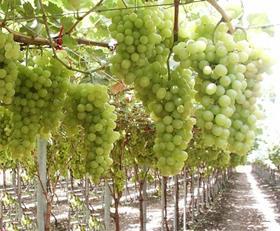
South Africa’s table grape sector says it has started the new season in a confident mood, with the total crop expected to be between 4 and 7 per cent above that of last year.
Industry body SATI says the expected increase is mainly due to new plantings coming into production, as well as a general adjustment towards normal harvest volumes in areas affected by adverse weather during the previous season.
SATI’s current crop estimate is between 52.9m and 54.3m (4.5kg) equivalent cartons, with this forecast to be updated in early December.
The harvest started in South Africa's northern table grape regions in week 45, with the packing of small volumes of the early variety Early Sweet. SATI says it expects most producers in the region to be packing the early cultivars Early Sweet, Prime and Starlight by the end of Week 46.
“Weather conditions are warm and relatively dry and thus perfect for harvest. The quality is excellent and vineyards are healthy,” a SATI statement read.
Growers in the Northern region earlier told Eurofruit that they are expecting strong demand from Europe, and that most of their grape volumes will end up in Western Europe. These grapes from South Africa are expected to enter a strong market in Europe and the UK due to the early end of the competitive season.
“Prices are expected to be high in the pre-Christmas period with an early shortage in South African volumes due to earlier hail damage in the early Orange River region,” explains one exporter. However, with a general forecast of excellent volumes and good crops for the rest of the season, at this stage everything points towards strong supply from Christmas onwards.
SATI says the very early parts of the Orange River have only started packing low volumes of Prime. “It is expected that volumes will only reach significant levels in these areas, as well as in Blouputs, towards the end of Week 46. Very hot weather conditions are being experienced. The quality is excellent and vineyards are healthy.”
SATI says at this stage the outlook is also good for the mid- and late-season areas.



